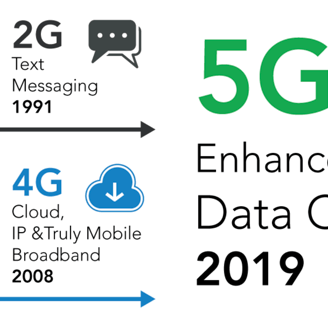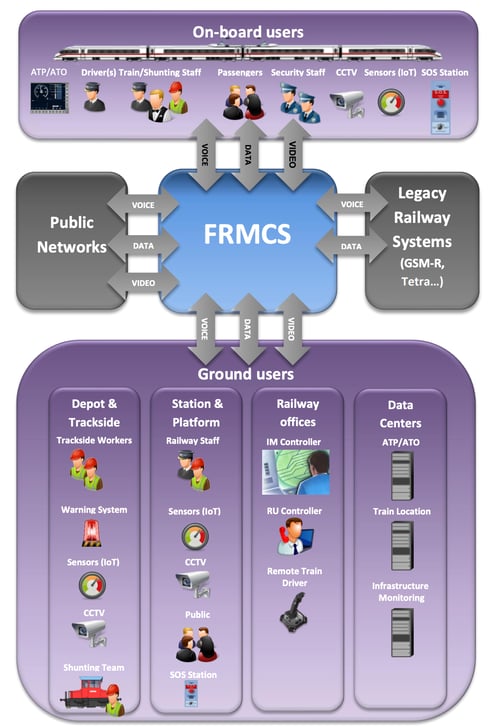FRMCS: The Future of Railway Mobile Communications System
Discovering how FRMCS, the 5G-based successor to GSM-R, is revolutionizing railway communications with enhanced safety, efficiency, and real-time connectivity. Key features, benefits, and global rollout shaping the future of smart rail networks.
DEEP DIVE
Miguel Millan Montanes
3/26/20254 min read
In one of my previous articles I talked about how important telecommunications are for railways and the different standards there are in the United States & the European Union (How Telecom supports modern transportation). This week I wanted to get in more depth about the Future Railway Mobile Communication System, or FRMCS.
The railway industry is undergoing a significant transformation, driven by the need for increased efficiency, safety, and connectivity. FRMCS, designed to replace GSM-R (Global System for Mobile Communications – Railway), is going to play a key role since it is the next-generation standard. FRMCS goal is to provide a more resilient, flexible, and future-proof communication infrastructure that supports the needs of railway operators worldwide. In this article I want to explore the key features, benefits, challenges, and potential of FRMCS in shaping the future of railway communications, but first, why do we need it?
The Need for FRMCS
GSM-R has served railway communications for over two decades but is now reaching its limitations. The transition to FRMCS is driven by technological evolution, GSM-R is a +30-year-old technology that, whilst reliable, it cannot comply with the higher bandwidth requirements of nowadays railways. New deployed systems have bigger bandwidth demand for real-time monitoring, predictive maintenance and safety enhancements, not to talk about interoperability and security. A modern system needs to ensure seamless communication while guaranteeing cybersecurity, and FRMCS was born to replace GSM-R and be the railway-communications standard of the future.


Key Features of FRMCS
FRMCS is being developed as part of the International Union of Railways (UIC) initiative to provide a modern, scalable, and interoperable communication solution for railways worldwide. Some of its key features include:
5G-Based Architecture: Unlike GSM-R, which is based on second generation technology, FRMCS is based on 5G networks, which provides a significant boost in performance, reliability, and flexibility. The enhanced bandwidth and ultra-low latency of 5G enable real-time video surveillance, automated train control, and seamless IoT integration, all critical for modern railway operations.
Mission-Critical Services (MCX): The ability to implement network slicing allows railway operators to allocate dedicated virtual networks for specific services, such as train signalling, emergency communication, and passenger services over less time-sensitive applications, ensuring a robust communication infrastructure. FRMCS is designed to support services such as voice communication, data exchange, and multimedia applications. It incorporates features from the 3GPP’s mission-critical standards, ensuring reliable and secure communication in all conditions.
Enhanced Cybersecurity: Given the constant threat of cyber-attacks, FRMCS is being designed to incorporate advanced security mechanisms, including end-to-end encryption, authentication, and intrusion detection. This will significantly reduce the risk of cyberattacks while ensuring protection of critical railway infrastructure.
Interoperability: The railway industry has already announced that in 2030 will be the year when GSM-R ends its service life. That is why FRMCS is designed to be backward-compatible, allowing a smooth transition without immediate replacement of all legacy systems (more than 210,000km world-wide). It also supports cross-border interoperability, ensuring seamless communication between different national railway networks.


Benefits of FRMCS
As I have talked before, the implementation of FRMCS brings numerous advantages to railway operators, and passengers. It enhances safety and reliability by providing real-time, high-quality communication between train operators, dispatchers, and control centers, ensuring rapid response to emergencies and minimizing risks. It also improves operational efficiency, thanks to the high bandwidth, by enabling enhanced automation and predictive maintenance, allowing railway operators to optimize scheduling, reduce downtime & maintenance costs. By deploying a 5G-based communication system, railway operators will make sure long-term viability, reducing the risk of obsolescence and expensive infrastructure overhauls.
The Road Ahead: Deployment and Global Adoption
Several countries and railway operators are actively working on FRMCS pilot projects and deployment strategies. The International Union of Railways (UIC) is leading the standardization efforts, while other regions, including Asia and North America, are closely monitoring developments. The EU is spearheading FRMCS deployment as part of its Digital Rail strategy, ensuring seamless communication across all member states. In Asia, countries such as China and Japan are exploring FRMCS to enhance high-speed rail connectivity and automation and the U.S. and Canada are considering FRMCS for future railway communication needs, though existing systems like Positive Train Control (PTC) remain dominant. The UIC has already put together a deployment plan with different approaches that will be put into motion during the next few years.


Conclusion
With more than 210.000km of railroads been supported by the soon-to-be obsolete technology GSM-R, the Future Railway Mobile Communication System (FRMCS) represents a critical step forward in railway communications. By leveraging 5G technology FRMCS will enhance safety, efficiency, and connectivity. While there are still challenges to face, including R&D costs and standardization discussions, the long-term benefits far outweigh these concerns. As railway operators worldwide embrace FRMCS, the future of rail transportation will become more resilient, automated, and passenger friendly. FRMCS will keep connections running when it matters most.
References
UIC (International Union of Railways). (n.d.). Description and evaluation of possible FRMCS migration variants for existing ETCS and cab radio on-board units (Version 1.2). Retrieved from https://uic.org/IMG/pdf/description_and_evaluation_of_possible_frmcs_migration_variants_for_existing_etcs_and_cab_radio_on-board_units-toba_7515-v1.2.pdf
UIC (International Union of Railways). (n.d.). FRMCS Telecom On-Board System - Architecture & Migration Scenarios (Version 1.0.0). Retrieved from https://uic.org/IMG/pdf/frmcs_telecom_on-board_system_-architecture_migration_scenarios-toba7540-1.0.0.pdf
UIC (International Union of Railways). (n.d.). FRMCS Functional Requirements Specification (FRS) - Version 2.2. Retrieved from https://uic.org/IMG/pdf/frmcs_frs_fu-7120_v2-2.pdf


